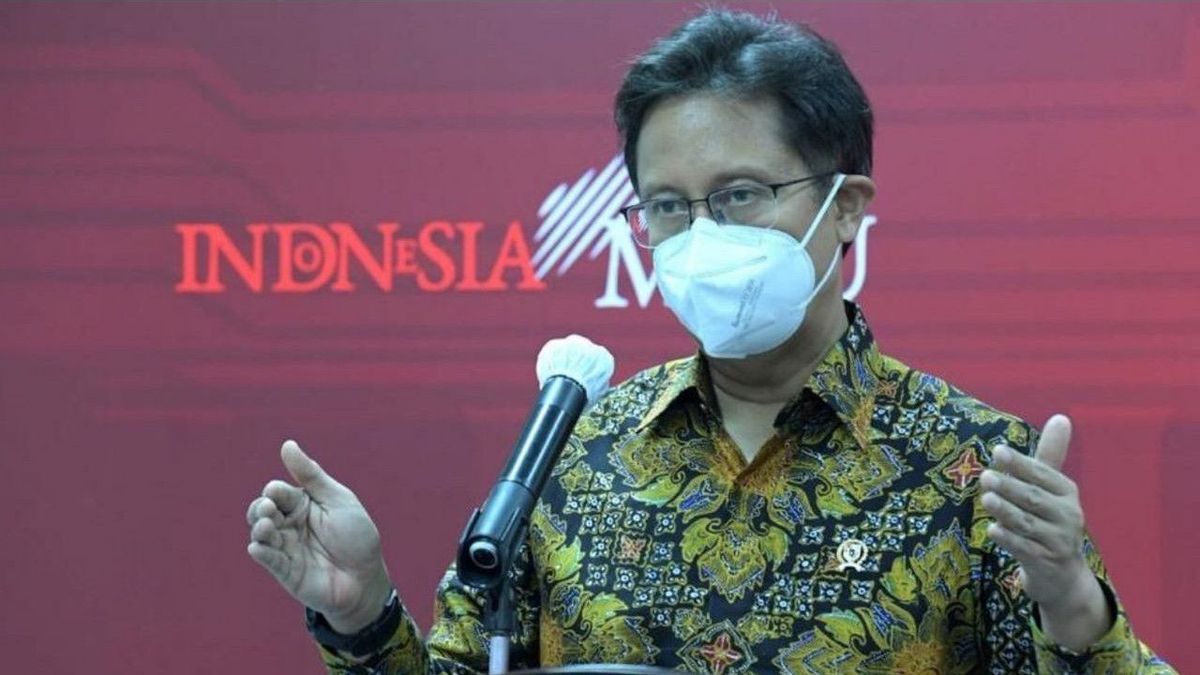JAKARTA - Health Minister Budi Gunadi Sadikin will change the COVID-19 zoning data indicator based on the number of cases in one region to one based on the positivity rate. The chaos of the corona data is indeed one of the inhibiting factors for controlling the pandemic. So will this change bring hope to controlling the virus?
"We will no longer look at the red yellow green based on confirmation cases but focus on the positivity rate," Budi said in a meeting with Commission IX of the DPR which was broadcast virtual on July 5 yesterday.
Budi said the change was taken because the COVID-19 testing and tracing system was still considered weak. He revealed that so far, not a few regions have outsmarted the zoning system by lowering the number of tests.
"Because this test is used to assess an area, it seems as if all regions are fighting for good scores by not opening all existing tests. Or even not doing big testing as they should," said Budi.
In addition, Budi said the government would increase the number of COVID-19 testing to 400,000 tests per day. He explained that although currently Indonesia's test rate has exceeded the WHO standard of 1/1000 population per week or about 38,000 people per day, this is not enough. The reason is, the spread of this delta variant is so fast.
Meanwhile, Budi explained that the COVID-19 testing strategy would later be adjusted to each region depending on the positivity rate in the region. The greater the positivity rate in an area, the more tests there are. "So for areas where the positivity rate is above 25 percent, we ask WHO 15 times."

The chaotic data handling of COVID-19 has actually occurred since the corona case emerged in early March last year. The data asymmetry occurs because the Ministry of Health (Kemenkes) does not yet have an integrated data system.
The absence of data integration at the beginning of the pandemic and delays in laboratory results made tracking of those who came into contact with positive patients slow. After seeing this problem, the Task Force for the Acceleration of Handling COVID-19, led by Doni Monardo, launched an integrated data system called Bersatu Lawan Covid (BLC) on April 27, 2020.
According to two staff members of the Task Force who were interviewed by Tempo Magazine at the beginning of the pandemic, they said that the agency had not yet obtained detailed data on the condition of the corona outbreak. Even though the data is needed to monitor the pandemic conditions and determine government policies. The two sources said the conditions had made the Task Force "work blind".
This system was working well. The reason is, this system helps to cut the reporting lines of many doors. Waiting time for laboratory results can also be faster because hospitals can directly check into the system.

However, after a few weeks of this system running, the Ministry of Health issued a circular containing an order for reporting of laboratory data to be carried out in the Ministry of Health's system, All Record. According to a Tempo source in the government, Minister of Health Terawan Agus Putranto briefly contacted Task Force Chairman Doni Monardo shortly after the BLC system was operational.
Terawan at that time asked for the reporting system back under the Ministry of Health. The government spokesman for handling the corona virus, Achmad Yurianto, said that the health data issue was the responsibility of the Ministry of Health.
He explained that the Task Force was an ad hoc institution that could be dissolved at any time when its duties were completed. "If it is disbanded, who is responsible for the data? The data must be kept because it is a state document," said Yurianto.
The confusion over the handling of the corona virus also reached the Palace. According to a Tempo source, President Joko Widodo (Jokowi) has repeatedly asked the Ministry of Health and other institutions to correct the data. However, the improvement was slow. At its peak on June 18, 2020, Jokowi poked fun at the Ministry of Health in a cabinet meeting. Jokowi questioned the low absorption of the budget at the Ministry of Health which had only been used by 1.53 percent.
The data confusion continued until the Minister of Health Terawan was replaced by Budi Gunadi Sadikin. After a week of being inaugurated by Jokowi on December 23, 2020, Budi immediately promised to improve COVID-19 data. He said that there would be no difference between regional and central data.
Just after more than a year in office, this action to improve COVID-19 data has resumed. Budi replaces the COVID-19 zoning data indicator.
Epidemiologist from Griffith University Australia, Dicky Budiman, said that although it had been said since last year that the zoning indicator should refer to the positivity rate, he said it was never too late. "It is never too late, because now is the time for everything to be strengthened. What is clear is consistency and commitment," said Dicky to VOI.
The importance of referring to the positivity rateDicky explained that there are two important reasons why the zoning data indicator should refer to the positivity rate. First, to see the adequacy of testing. "For testing, we only look at the number of cases. But we don't know whether there is enough testing in one area."
However, when referring to the positivity rate, said Dicky, apart from being able to see the number of cases of the virus spreading, it can also show the quality of an effort to prevent the spread of the virus. "If the positivity rate test is high, it not only shows that the testing is lacking, but it also means that there are not enough interventions to prevent infection," he explained.
In addition, the positivity rate also provides criteria for determining the policy of easing activities in a location. "So this must be used as a basis, because the positivity rate also describes the risk of exposure in an area. The higher the (positivity rate) is above five percent, the higher the risk of transmission," explained Dicky.
Dicky also shared his opinion on how to anticipate data manipulation which was mentioned by Minister of Health Budi. He said, in addition to suppressing regional apparatus, the center must also ensure that each region has a global positivity rate target. And no less important is to provide literacy to the regions that the positivity rate test is important for controlling the pandemic.
"In addition to pressing, ensuring that each region has indicators or targets for the global positivity rate test, it also provides literacy. It provides an understanding to the regions that the positivity rate test is very important, which will determine how to control it going forward," explained Dicky.
And last but not least, Dicky reminded the need to instill an understanding that the positivity rate test is not to create cases, but to find them. So, if there is data manipulation, then the one who will lose is yourself.
"You have to really look at the case. Do testing honestly so we know the problem. So if there is manipulation, it's your own loss. It must be understood that testing does not create cases but finds cases," he concluded.
*Read other information about COVID-19 or other interesting articles from Ramdan Febrian Arifin.
Other BERNASThe English, Chinese, Japanese, Arabic, and French versions are automatically generated by the AI. So there may still be inaccuracies in translating, please always see Indonesian as our main language. (system supported by DigitalSiber.id)









